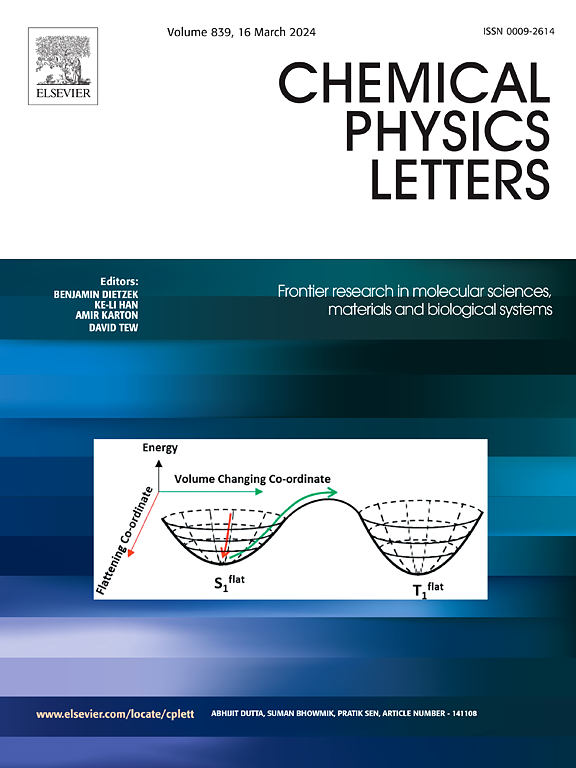探索新型 Na4XS(X = Se、Te)材料的紫外线防护和光伏效率:第一原理方法
IF 2.8
3区 化学
Q3 CHEMISTRY, PHYSICAL
引用次数: 0
摘要
新型钙钛矿材料具有显著的热稳定性和光电调节特性。我们利用最先进的密度函数理论研究了 Na4XS(X = Se、Te)材料的结构、光电和传输特性。计算得出的内聚能和形成能证实了所研究材料的稳定性质。对其带状结构剖面的研究表明,这些材料具有直接带隙,并表现出半导体性质的特征。在材料的计算反射光谱中确定的峰值表明,它们有可能成为紫外线反射材料。这可能会使它们用于紫外线屏蔽设备。所研究材料的负塞贝克系数表明它们具有 n 型导电性。基于它们直接的能隙、稳定的结构、可调的光电性能和显著的热特性,它们在广泛的新型先进技术应用中具有巨大的潜力。本文章由计算机程序翻译,如有差异,请以英文原文为准。

Exploring novel Na4XS (X = Se, Te) materials for UV protection and photovoltaic efficiency: First-principles approach
Novel chalcogenide materials exhibit remarkable thermal stability along with regulating optoelectronic properties. The structural, optoelectronic, and transport properties of Na4XS (X = Se, Te) materials were investigated using the most advanced density function theory. The calculated cohesive and formation energies confirm the stable nature of the studied materials. The study of their band structure profile reveals that their materials have a direct band gap and exhibit characteristics of a semiconducting nature. The determined peaks in the materials’ computed reflectance spectra suggest that they have the potential to be UV-reflective materials. This could lead to their potential use in UV-shielding devices. The negative Seebeck coefficients of the studied materials specify that they possess an n-type conductivity nature. Based on their direct energy gap, stable structure, adjustable optoelectronic performance, and remarkable thermal nature, they have significant potential for a wide range of novel and advanced technological applications.
求助全文
通过发布文献求助,成功后即可免费获取论文全文。
去求助
来源期刊

Chemical Physics Letters
化学-物理:原子、分子和化学物理
CiteScore
5.70
自引率
3.60%
发文量
798
审稿时长
33 days
期刊介绍:
Chemical Physics Letters has an open access mirror journal, Chemical Physics Letters: X, sharing the same aims and scope, editorial team, submission system and rigorous peer review.
Chemical Physics Letters publishes brief reports on molecules, interfaces, condensed phases, nanomaterials and nanostructures, polymers, biomolecular systems, and energy conversion and storage.
Criteria for publication are quality, urgency and impact. Further, experimental results reported in the journal have direct relevance for theory, and theoretical developments or non-routine computations relate directly to experiment. Manuscripts must satisfy these criteria and should not be minor extensions of previous work.
 求助内容:
求助内容: 应助结果提醒方式:
应助结果提醒方式:


